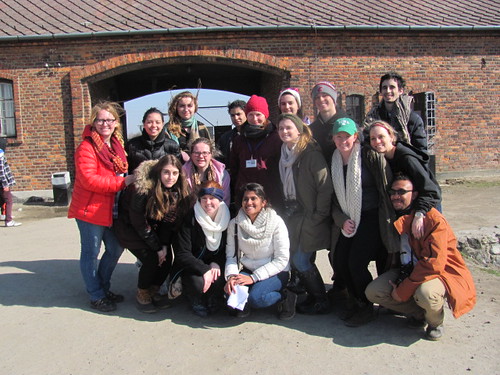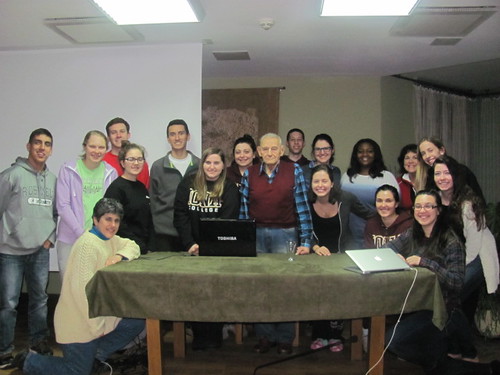Possessions of the Victims of Auschwitz I
Display that contained 40,000 pairs of shoes left at Auschwitz
Eye glasses from the victims
Pots and pans from the victims
Going to Auschwitz I and Auschwitz-Birkenau concentration camps was like entering a new world in which unimaginable suffering took place. When we walk through the camps, we are all trying to imagine what it was like for those who were trapped inside. And yet, no matter how hard you try, it is impossible to comprehend. What we have learned, however, is that seeing the possessions that were taken away from the prisoners makes it all the more real.
Walking through the camps, I already began to feel an overwhelmingly appreciation of just being able to walk freely in the camps. While my family members, and the families of so many others were confined in those spaces, unable to even think on their own, here we are getting the opportunity to walk on these grounds and witness the tragic history, all while being able to leave whenever we pleased. It may sound like something so minor, but seeing the sign that read "HALT" in front of the gate of Auschwitz I and knowing that it was nearly impossible to escape between the guards at every corner, the machine guns and dogs, the electric fence and the spotlights, it was unreal to be standing underneath it. For a prisoner, trying to get past the guards at the main gate meant making yourself susceptible to torture, surrendering your life along with the life of 10 others from your barrack or, the life of your family members.
As we began to see the possessions and the remains of the victims, the reality began to hit us hard. The first exhibition we saw included the hair from the victims, which was often used to create blankets, one of which was on display. I began to imagine how easily this could be the hair on my head, and to question why we are so lucky while so many others had to suffer for absolutely no reason. We then entered the room containing the shoes left behind by the victims. The display contained 40,000 pairs of shoes, and this amount was only a small portion of all the shoes that had been taken. We moved on to the display containing the eyeglasses of the victims, and then finally the prayer shawl. I quickly thought of my glasses, and of the prayer shawl I received for my Bat Mitzvah. As I so easily could imagine my possessions sitting in the display for all the world to view and learn from, I felt even more pain. Lastly, the pots and pans of the victims, which to me was symbolic of a traditional Jewish family. From my experience, nothing pleases a Jewish mother more than cooking and taking care of her family; and this is exactly what the women who came to these camps were planning on doing. They brought all that they could carry on their backs, but managed to bring with them the necessary tools to continue taking care of their children and their husbands. As our tour guide stated, "they truly were thinking about tomorrow. But for them, tomorrow simply never came."
It is impossible to see the exhibitions and to not feel an overwhelming sense of appreciation for what you have in your life. There is so much we take for granted, and we are quick to forget how little freedom so many others before us had. The prisoners in Auschwitz had no rights whatsoever, something that just added to the dehumanization that they endured. They were viewed as an illness, a bacteria that must be removed, one that certainly does not have the right to keep the shoes on their feet or the hair on their head. And yet, with practically nothing left to their name, there were ones who still did not give up. One man was persecuted because he was not willing to give up his prayer shawl. We really do not know what it means to appreciate what little you may have with your heart and soul, enough to give up your life for it. The people who lost their lives at Auschwitz are brave beyond comprehension, and it was an honor to see that their legacy is not being forgotten.
Rest in Peace to all those who lost their lives in the Shoah. May you live forever in peace and happiness, in G-ds Eternal Kingdom.













































